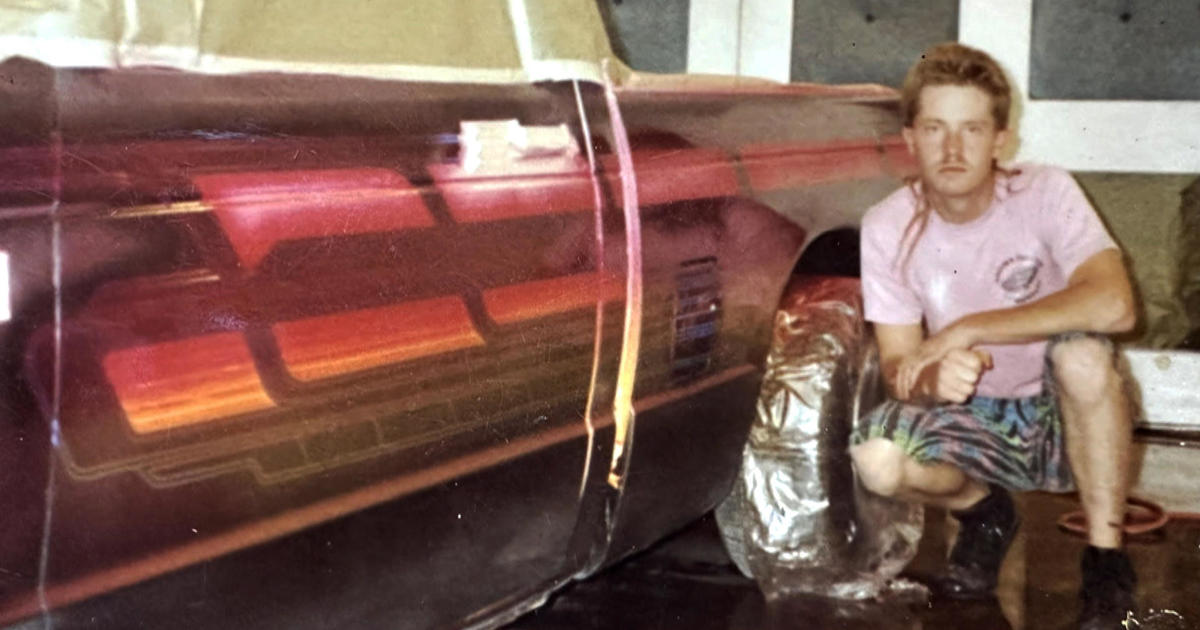This week on 60 Minutes, correspondent Bill Whitaker took a little trip to Española, New Mexico, the self-proclaimed lowrider capital of the world.
Lowriders are exactly what they sound like: cars that ride low to the ground. But they also are also famous for their brightly colored, eye-catching paintwork.
While reporting the story, Whitaker met an artist named Rob Vanderslice, a rare “gringo” in the lowrider world, which originated in the Mexican American communities of the Southwest and West Coast just after World War II.
Vanderslice made a name for himself with his elaborate, serpentine paint jobs that stretch across the vehicle, something that has become known as a “Rob job.”
“Everything I do is with tape… you tape it, you spray it, you untape it,” Vanderslice explained to Whitaker in an interview.
He said some designs take three or four months of careful planning, until the final layers and patterns are ready to be painted on.
Despite their origins, lowriders first entered wider public consciousness during the heyday of gangster rap, when the cars were featured in the music videos of Ice Cube, Snoop Dogg, and Dr. Dre, beginning in the late 1980s.
“The cars played a big role in a lot of the videos. But that also associated the cars with gangs, and even with drug dealing,” Whitaker told 60 Minutes Overtime.
Vanderslice said many of his customers were gang members and wanted their own lowriders, emulating rap’s biggest stars.
“If you were somebody from the hood, and you see all these fancy cars… what does it take to get one of those cars?” he told Whitaker.
“You would do whatever you could do… to end up with one of those cars.”
Vanderslice became involved with gang culture and started using drugs as he rose in the lowrider world. He eventually became addicted to crystal methamphetamine.
But after three felony convictions, Vanderslice quit drugs. He’s now celebrating 13 years of sobriety.
Vanderslice showed Whitaker his personal car that illustrates his journey, as he says, “out of the darkness, into the light.”
Parked outside his workshop, Vanderslice’s 1996 Cadillac Fleetwood sparkled in the sun, metallic flakes gleaming throughout the paint job.
He said the car’s changing hues, going from dark colors on one side to light colors on the other, represent his life experience.
“I got the oranges, the reds, [and] violets on one side. And then this whole side is all…blue, magentas, violets… basically describing my life change out of the darkness, into the light. My past, and then my present.”
Vanderslice even added a unique feature: LED lights embedded in the paint that light up, the bright spots in his life on the other side.
Through his reporting, Whitaker found lowrider culture has made a similar transition toward positive change.
“The culture is changing… it’s moving away from its past and becoming more about helping the community develop,” he said.
Communities like Española, and other parts of Northern New Mexico, experience high rates of crime, drug use, and poverty. And the lowrider community has stepped in to help.
Vanderslice is now using his artistic talent to mentor young people in the community who may be struggling as he did in his youth.
He teaches them to build and paint lowrider bicycles, which are meant to attract attention – and ride low and slow – like their automotive counterparts.
“It keeps kids out of trouble. Whatever we can do to point people in the opposite direction that we went in, that’s what we’re trying to do now,” he told Whitaker.
“We’re going from out of the darkness, into the light.”
The video above was produced by Will Croxton. It was edited by Sarah Shafer Prediger.

Leave a Reply